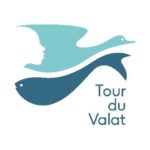Tour du Valat Estate
Rewilding Estate in Camargue
The Tour du Valat Estate covers a total area of 2649 ha in two different geographical areas located in the Camargue. The Tour du Valat Estate itself, near the village of Le Sambuc (city of Arles, Bouches-du-Rhône), covers 2548 ha, including 1845 ha listed as a regional nature reserve, 715 ha of agricultural parcels and buildings, the Verdier marshes (co-managed by inhabitants of the Sambuc village), the Petit Badon Estate, and the Commanderie dunes. The Petit Saint-Jean Estate, situated in the part of the Camargue located in the Gard Department, covers 101 ha, and is about 30 kilometers further west, near the town of Saint-Laurent-d’Aigouze.
The Tour du Valat Estate project aims at the conservation and management of temporary marshes, wetlands and dry grasslands in the heart of the Camargue. Tour du Valat estate is located on an old arm of the Rhone river with extensive pastures where Camargue horses (50) and bulls (400) are raised in an extensive way. The conservation project aims at a more natural hydraulic functioning, with as much as possible natural flooding including a better match with seasonal variations expected in the Mediterranean (i.e. flooded in winter, dry in summer). Conservation efforts are mainly focused at temporary marshes, saltmarshes and dry grasslands, and waterbird wintering for which the Camargue constitutes a stronghold in Europe. On the Petit-St-Jean Estate, the objective is to experiment agroforestry practices (vineyard, fruits) with conservation of large natural areas including a pine tree woodland. A small herd of sheep (30) has been newly settled there to help with vineyard management.
Maintenance of appropriate levels of freshwater in reedbeds to simulate a living delta by counteracting the embankment of the Rhone river. European Otter come back is strongly expected.

The Tour du Valat Estate covers a total area of 2649 ha in two different geographical areas located in the Camargue. The Tour du Valat Estate itself, near the village of Le Sambuc (city of Arles, Bouches-du-Rhône), covers 2548 ha, including 1845 ha listed as a regional nature reserve, 715 ha of agricultural parcels and buildings, the Verdier marshes (co-managed by inhabitants of the Sambuc village), the Petit Badon Estate, and the Commanderie dunes. The Petit Saint-Jean Estate, situated in the part of the Camargue located in the Gard Department, covers 101 ha, and is about 30 kilometers further west, near the town of Saint-Laurent-d’Aigouze.
The Tour du Valat Estate project aims at the conservation and management of temporary marshes, wetlands and dry grasslands in the heart of the Camargue. Tour du Valat estate is located on an old arm of the Rhone river with extensive pastures where Camargue horses (50) and bulls (400) are raised in an extensive way. The conservation project aims at a more natural hydraulic functioning, with as much as possible natural flooding including a better match with seasonal variations expected in the Mediterranean (i.e. flooded in winter, dry in summer). Conservation efforts are mainly focused at temporary marshes, saltmarshes and dry grasslands, and waterbird wintering for which the Camargue constitutes a stronghold in Europe. On the Petit-St-Jean Estate, the objective is to experiment agroforestry practices (vineyard, fruits) with conservation of large natural areas including a pine tree woodland. A small herd of sheep (30) has been newly settled there to help with vineyard management.

Maintenance of appropriate levels of freshwater in reedbeds to simulate a living delta by counteracting the embankment of the Rhone river. European Otter come back is strongly expected.


